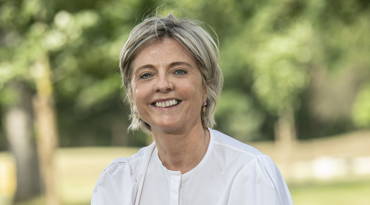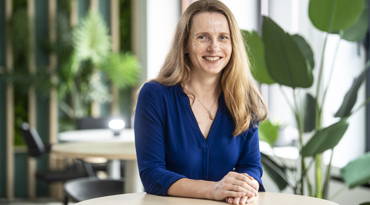‘An example in the field of sustainability.’ This is how Ann Vos, Manager Safety Health Environment and Quality, describes the Nyrstar plant in Balen. Or why zinc production is turning greener and greener.
Zinc plants don’t immediately enjoy a green image, but this is unjustified, you tell me.
‘The plant of the future must meet a number of criteria. It must be electrified, use green energy, and work to a circular model. Preferably it generates energy itself and uses it flexibly, depending on national power needs.’
‘Well, Nyrstar is doing a good job today on that plant of the future, both in the Netherlands (where both a smelter and the head office are located in Budel) and here in Balen. We have reduced our CO2 emissions in the Netherlands by almost 100 percent – because we purchase only green energy there – while in Belgium emissions have already been cut by 50 percent.'
'We ourselves hardly emit any CO2 because our industrial processes do not use fuel but electrons. Our raw materials are zinc – from the ground or from recycling – and electrons. Our real energy consumption is therefore limited to the ancillary processes.’
Yet Trafigura, your majority shareholder, wants to invest heavily in Balen to reduce CO2 emissions even further.
‘That’s correct, because today we still use limited quantities of gas, for example to power our forklift trucks. In addition, a number of electricity savings are possible here and there, even though we are partly green today. Things can always be done a little more efficiently. But our customers can already purchase totally CO2-free zinc.’
The global supplies of zinc concentrate, your basic raw material, are very large. But it remains a metal that must be mined. What is the environmental impact of this?
‘The good news is that zinc is 100 percent recyclable.

We ourselves hardly emit any CO2 because our industrial processes do not use fuel but electrons from renewable energy.
Ann Vos,
Manager Safety Health Environment and Quality at Nyrstar
‘Zinc from cars or crash barriers can be recycled more quickly. Owing to the long lead time, we must therefore use newly mined zinc for the time being, which does not prevent some of the zinc we process in our plants from being recycled material.’
'Many products that contain zinc – for example a steel bridge or a roof – have very long lifespans, up to a hundred years. This means that we often have to wait a very long time before we can reuse the zinc in question. We also process this recycled material into pure material, which can be used again for all purposes. We have
developed a comprehensive programme to make all aspects of zinc mining as sustainable as possible. From the pure environmental impact to working conditions.’
Zinc concentrate also contains other metals, like copper and cobalt. What happens to these?
‘We sell copper in Belgium, for example, to companies in the metal industry. Ditto for cobalt or nickel. Every raw material has a destination. We continue to collaborate with other companies in this field. For example, zinc concentrate also contains iron, and we, for example, discuss with steel plants whether they can take over that iron, after which we in turn process the zinc that they use.’
Is a fully circular model – where hardly any zinc ore needs to be mined – feasible?
‘In theory, yes, but we notice that policymakers are at times too daringly optimistic in that area. We are effectively moving further in the recycling of zinc. Today, a lot of money and time is being invested in research into the recycling of very complex flows, but this usually comes with a very hefty price tag. And of course someone will also have to pay that bill.’
Where does the Balen plant rank worldwide today in terms of greening and sustainability?
‘Europe is well ahead in terms of sustainability, but even within Europe this plant is definitely in the top three. We have made enormous steps forward in heat recovery and energy reuse in recent decades. I’m not exaggerating when I say that this is a model plant.’


